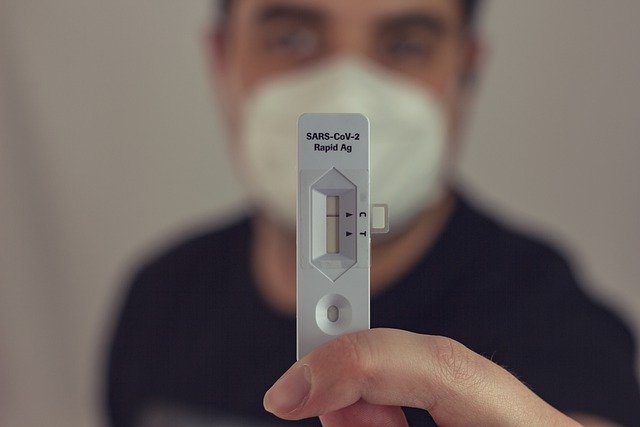WINNIPEG: The Justice Centre represents churches and individuals who are challenging government lockdown restrictions in the Court of Queen’s Bench as unjustified violations of the Charter freedoms to associate, worship, and assemble peacefully. The hearing commenced on May 3, 2021 and is continuing this week.
The onus is on the Manitoba Government to justify its restrictions on Charter rights and freedoms as being reasonable, necessary and beneficial.
One of the crucial issues in this trial is the operation and reliability of the Polymerase Chain Reaction (PCR) test that is used by governments across Canada, including the Manitoba Government, to diagnose Covid and measure its spread.
The Westphalian Times explains PCR tests as follows:
The current COVID testing is based on polymerase chain reaction (PCR) – “a fast and inexpensive technique used to ‘amplify’ – copy – small segments of DNA.” Many internationally recognized experts on virology and PCR testing are questioning if the tests have been made overly sensitive and many positives are the result of long dead and no longer contagious virus or even contamination in labs. PCR testing was invented to find genetic viral material in a sample and has not traditionally been used as the sole method for identifying people suffering from a viral or bacterial disease.
COVID testing is typically performed using a nasopharyngeal swab, a 6-inch long swab inserted deep into the nostril. The swab is rotated for a while and then it is sent to a lab where a PCR test will dramatically amplify the amount of genetic material captured and then compare it to the DNA or RNA of a particular segment of the COVID virus (reference RNA).
To get enough genetic material to test, the PCR process increases the genetic material present by copying it and then copying it again, over and over. Each of these increasing steps is called a “cycle” and the genetic material in the solution is reacted against the reference DNA to determine a positive. If the sample contains a large amount of COVID virus it will react positive after only a few cycles, while a sample with small amounts of genetic material will require more cycles to amplify enough genetic material to get a positive result.
Since the PCR test amplifies traces of COVID-19 through cycles, a lower number of cycles needed to get a positive suggests the presence of a higher viral load for the person being tested and therefore a higher contagion potential.
The number of cycling required to identify viral material in a given sample is called the cycle threshold (Ct).
The Justice Centre’s expert medical witnesses, Dr. Jay Bhattacharya, world-famous epidemiologist and Professor of Medicine from Stanford University, and Dr. Thomas Warren, infectious disease specialist and medical microbiologist, both provided evidence that the PCR test is unreliable in determining whether a person is infectious with the actual Covid-19 disease.
Chief Microbiologist and Laboratory Specialist Dr. Jared Bullard is a witness for the Manitoba government in this hearing. Questioned under oath by Justice Centre lawyers on Monday May 10, Dr. Bullard acknowledged that the PCR test has significant limitations. The head of Cadham Provincial Laboratory in Winnipeg, Dr. Bullard admitted that PCR test results do not verify infectiousness, and were never intended to be used to diagnose respiratory illnesses.
Dr. Bullard testified that PCR tests can be positive for up to 100 days after an exposure to the virus, and that PCR tests do nothing more than confirm the presence of fragments of viral RNA of the target SARS CO-V2 virus in someone’s nose. He testified that, while a person with Covid-19 is infectious for a one-to-two week period, non-viable (harmless) viral SARS CO-V2 fragments remain in the nose, and can be detected by a PCR test for up to 100 days after exposure.
Dr. Bullard testified that the most accurate way to determine whether someone is actually infectious with Covid is to attempt to grow a cell culture in the lab from a patient sample. If a cell culture will not grow the virus in the lab, a patient is likely not infectious. A study from Dr. Bullard and his colleagues found that only 44% of positive PCR test results would actually grow in the lab.
Dr. Bullard’s findings call into question the practice used in Manitoba (and elsewhere in Canada) of the results of classifying positive PCR tests as “cases,” which implies infectivity. Equating positive PCR tests to infectious cases, as so many provinces have done over the course of the past 13 months, is incorrect and inaccurate, according to this Manitoba Government witness.
Dr. Bullard acknowledged that he has been closely studying the correlation between Cycle threshold (Ct) value and infectiousness since at least May 7, 2020. Dr. Bullard acknowledged that Manitoba has known for some time that a given PCR test’s Ct value is inversely correlated with infectiousness. This means that testing for Covid at higher threshold levels can result in false positives as explained in this article. Even the World Health Organization (WHO) notes that careful interpretation of weak positive results is needed.
Weak results are those run at higher thresholds (more cycles). For example, someone with a positive PCR test that is run at 18 cycles is more likely to be sick and infectious than someone who has a test run at a Ct value of 40.
Dr. Bullard confirmed this was one of the first studies of its kind linking Ct value to infectiousness, and his study confirmed the findings of other studies in France and elsewhere.
Dr. Bullard also testified that Ct value (how many amplification cycles were used in a given PCR test to reach a positive test result) is significant as a proxy or indicator for infectiousness.
However, despite Dr. Bullard’s findings and recommendations in his two peer-reviewed studies, Manitoba still does not consider Ct values as a proxy for infectiousness in its public health response to Covid-19. Both Dr. Bullard and Manitoba Chief Medical Officer Dr. Brent Roussin confirmed under cross-examination that Ct values are not provided to public health officials by laboratories. Dr. Roussin admitted that he could mandate that the Ct value be provided to him, but that he has not done so.
Some jurisdictions, for example Florida, do consider Ct value in their public health response to Covid.
Finally, it should be noted that some Canadian news agencies have quoted Dr. Bullard as testifying that a positive PCR tests indicates infectivity 99.9% of the time. This is incorrect. Rather, Dr. Bullard testified that a PCR test will detect any viral RNA that is present in a sample 99.9% of the time. However, Dr. Bullard testified that determining whether or not a sample is actually infectious (containing a viable virus, capable of replicating) needs to be confirmed by lab culture. As noted, only 44% of the “positive” samples using a Ct of 18 returned a viable lab culture. Samples tested at a Ct of over 25, according to Dr. Bullard’s report, produced no viable lab cultures.
Manitoba has confirmed that it utilizes Ct’s of up to 40, and even 45 in some cases. This indicates “cases” resulting from such tests (above a Ct of 25) are almost certainly not actually infectious.
The hearing into Manitoba’s response to Covid and its violation of Charter rights and freedoms continues this week.








